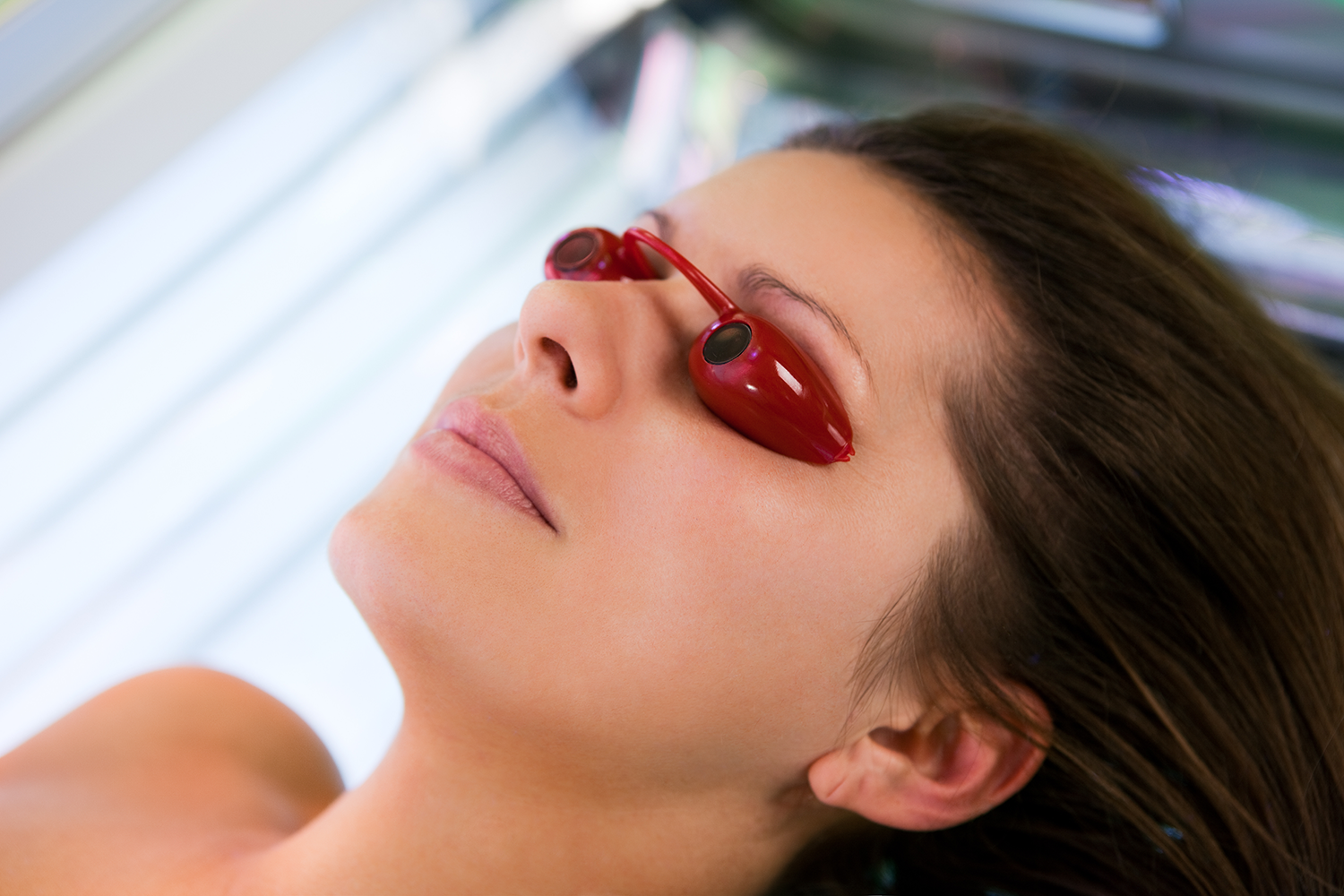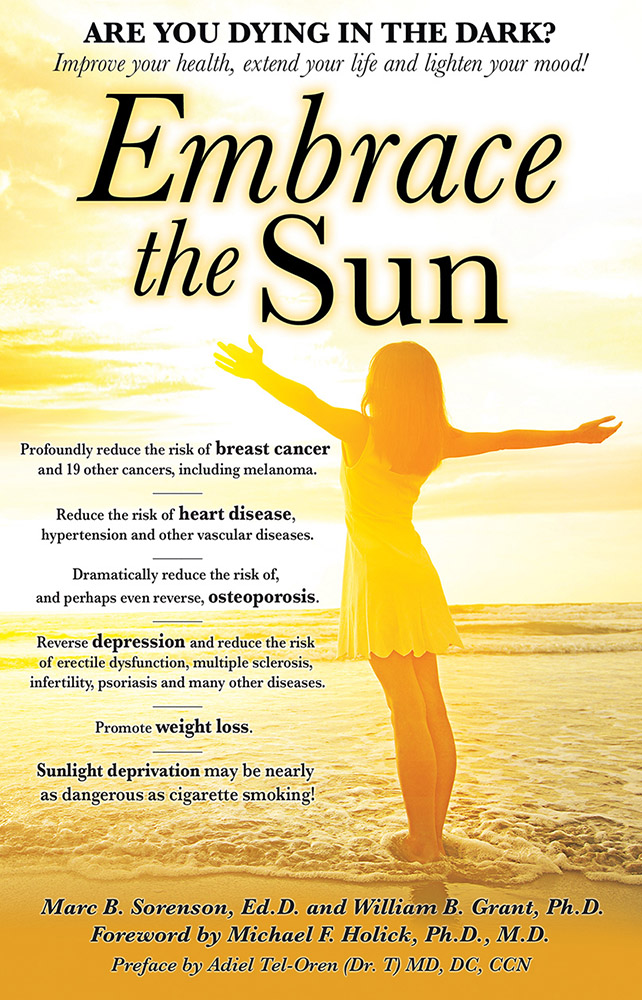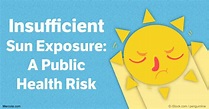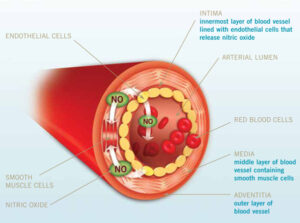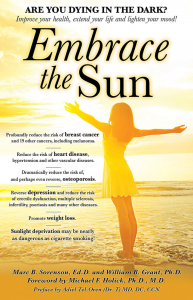Insufficient sunlight associates in a dose-response manner to higher risk of hypertension and earlier death. By Marc Sorenson, EdD. 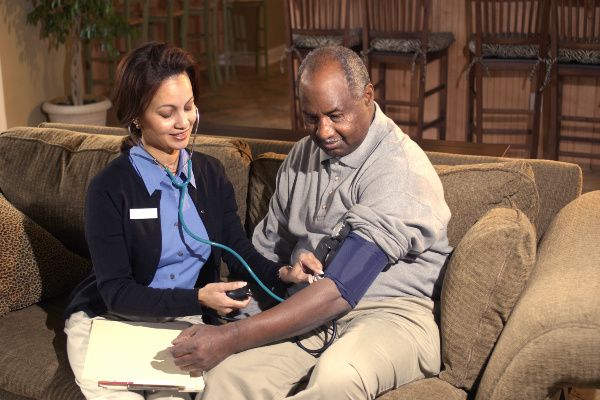
Understanding hypertension
Hypertension, or chronic high blood pressure, depends on the amount of blood the heart pumps and resistance to arterial blood. Thus, the tighter the arteries, the higher the blood pressure. The top number on a blood-pressure measurement, and stated in millimeters of mercury (mm/Hg), is systolic pressure. In addition, the lower number is diastolic pressure, another critically important measurement. Hypertension occurs when blood pressure is greater than 140/90 mm/Hg. Thirty-one percent of US adults are hypertensive. Hypertension can damage arterial walls and can eventually lead to an increased risk of death from heart disease, heart failure, and other arterial diseases. It also associates to a higher risk of kidney disease, irregular heart rhythms, osteoporosis, cognitive dysfunction, painful intercourse and stroke.
Does insufficient sunlight exposure influence hypertension?
Conventional textbook theory holds that the brain, blood vessels, and kidney regulate blood pressure. However, recent evidence suggests that the skin could also regulate hypertension, and insufficient sunlight plays a role in increasing it.
Insufficient sunlight, as mentioned, leads to a spate of diseases and disorders. In addition, some of those diseases have a dose-response relationship with sun exposure.
Hypertension is one of those diseases and can lead to disability and death. Blood pressure between 80 (diastolic pressure or lowest pressure) and 120 systolic (higher pressure), is in normal ranges. When blood pressure rises substantially above either of these figures and stays elevated, it is a danger signal.
Understanding the dose-response relationship.
So, what is a dose-response relationship (DRR)? This is where changes in one measured factor produces a predictable, consistent change in another measured factor. Thus, if I increase my exercise a certain amount weekly, I probably hope for a dose-response outcome: predictably better endurance. Consequently, if my body increases its endurance each week, my exercise produces a dose response relationship with endurance. Conversely, if someone stops exercising and loses a predictable amount of endurance, this is also a DRR (negative DRR).
An illustrative example of positive sunlight (rather than insufficient sunlight) and DRR.
My friend Wayne had severe hypertension when checking in at our former resort. After sunbathing each day for a month, hypertension decreased profoundly.
Wayne arrived with blood pressure of 157 systolic and 97 diastolic (157/97). Both of these measurements are dangerously high. Four weeks later, without medication, and while taking no vitamin D, the numbers dropped to 125/54. He had progressed from very high stroke risk to very low stroke risk. In addition, his vitamin D levels climbed to 103 ng/ml, a number I considered impossible without supplementation. I learned much, especially about sunlight, vitamin D levels and hypertension. Sufficient sunlight is a key to optimal levels of blood pressure. Many people believe that older persons cannot raise vitamin D levels. Yet, Wayne was in his seventies. Furthermore, insufficient sunlight was obviously a major cause of his hypertension. Wayne’s DRR occurred with the increased sun exposure and produced optimal blood pressure.
The latest research regarding insufficient sun exposure and hypertension
This latest research on insufficient sun exposure began by noting another important, but misleading fact. An inverse association exists between cardiovascular disease (CVD) and vitamin D levels. Yet, as the authors mentioned, trials of vitamin D supplementation seem to show no benefits for CVD. In addition, they state that benefits of high vitamin D levels for CVD might be a marker for something else. That something, of course, is probably sunlight. In their research, carried out by questionnaire, 23,593 women answered questions regarding melanoma. In addition, they also related factors of possible interest for hypertension. Those factors included detailed sun exposure habits, marital status, education, smoking, alcohol, BMI, exercise and chronic stress. Hypertension-medication use from 2005-2007 became the measurement tool used to determine hypertension incidence among members of the study group.
All subjects filled out a questionnaire to determine sun-exposure and sun-bed habits:
- Do you sunbathe during summer?
- Do you sunbathe during winter vacation?
- Do you travel south to sunbathe?
- Do you use a sun bed?
The investigators deemed that women answering ‘yes’ on one or two questions had moderate sun exposure. Those answering ‘yes’ on three or four questions had the greatest sun exposure.”
The main goal was to assess hypertension risk associated with sun exposure, after adjusting the data for any confounding factors.
Here are the results:
- When compared with women with high sun exposure, those with low sun exposure were 41% were more likely to have hypertension. For moderate sun exposure, the women were 15% more likely to have hypertension. Hence, this is another example of a dose response relationship (DRR). The lower the sunlight exposure, the greater the risk of hypertension.
- Other risk factors for hypertension were lack of exercise, darker skin, chronic high stress and lack of university education.
- The researchers concluded, “That in our observational design sun exposure was associated with a dose-dependent reduced risk of hypertension…. [This] might partly explain the fewer deaths of [from] cardiovascular disease with increasing sun exposure.”
Hypertension is serious, and a major cause of death, which is inversely associated to sun exposure. Therefore, regular, non-burning sun exposure can provide one of the best protections against this insidious disease.
For more information on sunlight and health: https://sunlightinstitute.org/ and read the book, Embrace the Sun.
 Blood pressure is determined by (1) the amount of blood the heart pumps and the amount of resistance to blood flow in the arteries. Consequently, the more blood the heart pumps, and the tighter the arteries, the higher the blood pressure.[1]
Blood pressure is determined by (1) the amount of blood the heart pumps and the amount of resistance to blood flow in the arteries. Consequently, the more blood the heart pumps, and the tighter the arteries, the higher the blood pressure.[1]
Chronic high blood pressure, or hypertension, can damage arterial walls and can eventually lead to an increased risk from heart disease, heart failure, other arterial diseases, kidney disease, irregular heart rhythms, osteoporosis, cognitive dysfunction, painful intercourse and stroke.[2] High blood pressure, also known as hypertension, is rampant in western societies. Untreated high blood pressure is a major killer. It is especially dangerous because it is primary risk factor for heart disease and stroke.
I have written several blogs on high blood pressure. Nevertheless, the experience of my friend Wayne may provide impetus for hypertension sufferers to try the sunshine solution.
Wayne, a resident of Texas, came to our former health resort seeking help for conditions of high blood pressure, obesity and various other maladies. I recommended, along with our healthful nutrition program, that he should sunbathe daily. Consequently, he “took it to heart” and could be found outside by the pool daily, dutifully soaking up the midday sunlight.
Wayne arrived at our program with a blood pressure of 157 systolic and 97 diastolic (157/97). Most noteworthy, those numbers put him at high risk for a stroke. Normal blood pressures are considered below 120 systolic, and below 80 diastolic. Four weeks later, as a result of his lifestyle changes. His numbers dropped to 125/54, meaning that he progressed from high stroke risk to very low stroke risk. Especially relevant is the fact that these changes were accomplished without medication.
The average drop in blood pressure among all guests at that program was 16 systolic and 12 diastolic. This is remarkable, considering that many of them had normal levels coming in.
Here are just a few of the blood pressure changes accomplished during that time:
- Frieda, from Oregon, lowered her blood pressure 33 points systolic and 30 points diastolic.
- Joyce, from Rhode Island, lowered her blood pressure 31 points systolic and 24 points diastolic.
- Jeff, from Utah, lowered his blood pressure 39 points systolic and 12 points diastolic.
- Susan, from New York, lowered her blood pressure 20 points systolic and 26 points diastolic.
Was all of this success due to sun exposure?
It should not be construed that these results were all a result of sun exposure. Nor should we conclude that hypertension is a result of sun deprivation. Typical American citizens engage daily in “killer” nutrition, subjecting themselves to dietary patterns and chemical additives that never existed in human life until modern times. Therein lie the major causes of hypertension. Hence, part of the improvements in blood pressure were due to the dietary changes we implemented with our guests.
More research regarding sunlight and blood pressure:
Sun exposure can, to an extent, act as an antidote to the poisons we consume. And, it acts much more quickly than dietary changes. Consider this: Dr. Oplander and his colleagues demonstrated that whole-body Ultraviolet A (UVA) irradiation worked what seemed like a miracle.[3] It caused a rapid, significant decrease of 11% in both systolic (upper number) and diastolic (lower number) blood pressure 30 minutes after the exposure. That change lasted up to 60 minutes. The lowered blood pressure lasted up to 60 minutes. Not only did blood pressure decrease, but arterial blood flow increased by 68%.
Nitric oxide, a potent vasodilator (blood-vessel relaxer) that occurs with sun exposure, was the photoproduct that led to these spectacular, important changes. This is important, because UVA is available almost any time the sun shines, winter and summer. Ultraviolet B (UVB) is not available in some areas during winter, due to the sun’s angle. This is especially true in the higher latitudes of the Northern hemisphere, or in the lower latitudes of the Southern hemisphere. UVB stimulates the production of vitamin D. So, it is especially relevant here that vitamin D was not involved in the lowering of blood pressure in Dr. Oplander’s study. Nitric oxide, however, was very involved.
Let’s take a look at one more study of sun exposure and hypertension: research China demonstrates that exposure to sun correlates to a lowered risk:[4] In a randomly selected population of Chinese residents from Macau (where the rate of hypertension is very high), the following risk factors for hypertension were assessed: lack of sun exposure, low intake of fish, smoking, obesity and lack of exercise. An average of more than one-half hour of sun exposure per day, as compared to no sun exposure, predicted a 40% reduced risk for hypertension.
I could go on for another page about the horrors of blood-pressure medication, but what I have said suffices. Non-burning sun exposure is one of the best elixirs for hypertension. In conclusion, one might say that it is no wonder that Wayne overcame his blood pressure problem!
[1] Mayo Clinic Diseases and Conditions: High blood pressure (hypertension). http://www.mayoclinic.org/diseases-conditions/high-blood-pressure/basics/definition/con-20019580 (accessed January 5, 2016).
[2] Ann Pietrangelo. Healthline 2014 http://www.healthline.com/health/high-blood-pressure-hypertension/effect-on-body (accessed January 4, 2016).
[3] Opländer C, Volkmar CM, Paunel-Görgülü A, van Faassen EE, Heiss C, Kelm M, Halmer D, Mürtz M, Pallua N, Suschek CV.. Whole body UVA irradiation lowers systemic blood pressure by release of nitric oxide from intracutaneous photolabile nitric oxide derivates. Circ Res. 2009;105:1031–40.
[4] Ke L, Ho J, Feng J, Mpofu E, Dibley MJ, Feng X, Van F, Leong S, Lau W, Lueng P, Kowk C, Li Y, Mason RS, Brock KE. Modifiable risk factors including sun exposure and fish consumption are associated with risk of hypertension in a large representative population from Macau. J Steroid Biochem Mol Biol 2013 Nov 1 [Epub ahead of print].
Hypertension, or chronic high blood pressure, is determined by the amount of blood the heart pumps and the amount of resistance to blood flow in the arteries. The more blood the heart pumps and the tighter the arteries, the higher the blood pressure.[1] The top number on a blood-pressure measurement, stated in millimeters of mercury (mm/Hg), is called systolic pressure, and the lower number is called diastolic pressure. Hypertension is defined as having a blood pressure > 140/90 mm/Hg. 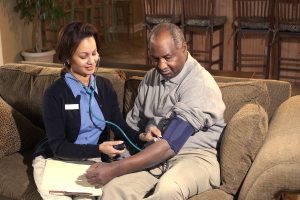 Thirty-one percent of US adults are hypertensive.[2] Hypertension can damage arterial walls and can eventually lead to an increased risk of death from heart disease, heart failure, and other arterial diseases. It is also associated to a higher risk of kidney disease, irregular heart rhythms, osteoporosis, cognitive dysfunction, painful intercourse and stroke.[3] Conventional textbook theory holds that blood pressure is regulated by the brain, blood vessels, or kidney, but recent evidence suggests it could be regulated in the skin, and sun exposure plays a role in controlling hypertension.[4]
Thirty-one percent of US adults are hypertensive.[2] Hypertension can damage arterial walls and can eventually lead to an increased risk of death from heart disease, heart failure, and other arterial diseases. It is also associated to a higher risk of kidney disease, irregular heart rhythms, osteoporosis, cognitive dysfunction, painful intercourse and stroke.[3] Conventional textbook theory holds that blood pressure is regulated by the brain, blood vessels, or kidney, but recent evidence suggests it could be regulated in the skin, and sun exposure plays a role in controlling hypertension.[4]
One of the earlier studies of hypertension and sun showed hypertension increased linearly at increasing distances from the equator.[5] One study of hypertensive subjects shows that blood pressure levels average 165/90 in winter but 134/74 in the summer, and both stroke and heart attack rates double in the winter.[6] Even in children, blood pressure is higher in winter than summer.[7] This, of course, is indicative of a protective role of sun exposure on hypertension.
UVB light treatments with sun lamps have also been shown to substantially lower blood pressure in 24 hours, and over six weeks to raise serum 25(OH)D levels of vitamin D by 162%, while lowering both systolic and diastolic pressure by six points.[8]
However, it is important to again mention that there is another important player in the relationship between hypertension and sun. Ultraviolet A (UVA) light (part of sunlight) stimulation of the skin causes the release of nitric oxide (NO) from pre-formed stores of NO in the skin. NO is a potent vasodilator, and when released into the arteries by UVA stimulation, causes increased blood flow and lowered blood pressure.[9], [10]
Safe sun exposure, along with plenty of vegetable and fruit consumption, may enable you to say goodbye to blood-pressure problems.
[1] Mayo Clinic Diseases and Conditions: High blood pressure (hypertension). http://www.mayoclinic.org/diseases-conditions/high-blood-pressure/basics/definition/con-20019580 (accessed January 5, 2016).
[2] Fields LE, Burt VL, Cutler JA, Hughes J, RoccellaEJ, Sorlie P. The burden of adult hypertension in the United States 1999–2000: a rising tide. Hypertension. 2004;44:398–404.
[3] Ann Pietrangelo. Healthline 2014 http://www.healthline.com/health/high-blood-pressure-hypertension/effect-on-body (accessed January 4, 2016).
[4] Johnson RS, Titze J, Weller R. Cutaneous control of blood pressure. Curr Opin Nephrol Hypertens. 2016;Jan25(1):11-5.
[5] Rostand SG. Ultraviolet light may contribute to geographic and racial blood pressure differences. Hypertension. 1997 Aug;30(2 Pt 1):150-6.
[6] Charach G, Rabinovich PD, Weintraub M. Seasonal changes in blood pressure and frequency of related complications in elderly Israeli patients with essential hypertension. Gerontology. 2004 Sep-Oct;50(5):315-21
[7] Polat M, Akil I, Yuksel H, Coskun S, Yilmaz D, Erguder I, Onag A. The Effect of seasonal changes on blood pressure and urine specific gravity in children living in Mediterranean climate. Med Sci Monit2006;12:CR186-90.
[8] Krae R, Bühring M, Hopfenmüller W, Holick MF, Sharma AM. Ultraviolet B and blood pressure. Lancet 1998;352:709-10.
[9] Liu D, Fernandez BO, Hamilton A, Lang NN, Gallagher JM, Newby DE, Feelisch M, Weller RB. UVA irradiation of human skin vasodilates arterial vasculature and lowers blood pressure independently of nitric oxide synthase. J Invest Dermatol. 2014 Jul;134(7):1839-46.
[10] D Liu, BO Fernandez, NN Lang, JM Gallagher, DE Newby, M Feelisch and RB Weller. UVA lowers blood pressure and vasodilates the systemic arterial vasculature by mobilization of cutaneous nitric oxide stores. Photobiology Abstract # 1247 May 2013.
The necessity of sun exposure for heart health, by Marc Sorenson, EdD…
Despite the fact that higher vitamin D levels are nearly always found to be related to reduced risk of cardiovascular disease[1] and associated diseases such as diabetes mellitus,[2] randomized controlled trials have not found that vitamin D supplementation reduces risk of cardiovascular disease.[3]
Therefore, vitamin D levels are likely a surrogate measurement for sun exposure, meaning that some other photoproduct such as nitric oxide (NO) may be responsible for the lowered risk of CVD. A pair of recent papers reported that leisure-time or recreational outdoor physical activity was significantly associated with reduced risk of cardiovascular disease. In a study in the U.S., both frequency and intensity of outdoor activities were associated with reduced risk, as was higher vitamin D level.[4] When vitamin D levels were removed from the equation, an inverse association was still found between outdoor recreational activity and mortality. The authors stated the following: “The underlying mechanism for this association may not involve 25(OH)D hence, further studies are warranted to confirm and investigate the underlying mechanism.” I would suggest that nitric oxide was the protective photoproduct, produced by sun exposure, which lessened the risk of CVD with outdoor activity.
Similar findings have been found for hypertension, diabetes mellitus, heart failure, stroke, and myocardial infarction (heart attack). In a study in Finland, older adults who had moderate leisure-time activity had 30-40% reduced mortality and cardiovascular disease rates than those with low activity levels, while those with high activity levels had 50% lower rates.[5]
Two messages from this research: (1) Start living more of your life outdoors. (2) Be sure to obtain plenty of non-burning sun exposure during you outdoor activity. Your life may depend on it.
[1] Wang L, Song Y, Manson JE, Pilz S, März W, Michaëlsson K, Lundqvist A, Jassal SK, Barrett-Connor E, Zhang C, Eaton CB, May HT, Anderson JL, Sesso HD. Circulating 25-hydroxy-vitamin D and risk of cardiovascular disease: A meta-analysis of prospective studies. Circ Cardiovasc Qual Outcomes. 2012 Nov 1;5(6):819-29.
[2] Song Y, Wang L, Pittas AG, Del Gobbo LC, Zhang C, Manson JE, Hu FB. Blood 25-hydroxy vitamin D levels and incident type 2 diabetes: a meta-analysis of prospective studies. Diabetes Care. 2013 May;36(5):1422-8.
[3] Veloudi P, Jones G, Sharman JE. Effectiveness of vitamin D supplementation for cardiovascular health outcomes. Pulse 2016;4:193-207 https://www.karger.com/Article/FullText/452742
[4] Donneyong MM, Taylor KC, Kerber RA, Hornung CA, Scragg R. Is outdoor recreational activity an independent predictor of cardiovascular disease mortality – NHANES III? Nutr Metab Cardiovasc Dis. 2016 Aug;26(8):735-42.
[5] Barengo NC, Antikainen R, Borodulin K, Harald K, Jousilahti P. Leisure-Time Physical Activity Reduces Total and Cardiovascular Mortality and Cardiovascular Disease Incidence in Older Adults. J Am Geriatr Soc. 2016 Dec 26. doi: 10.1111/jgs.14694. [Epub ahead of print]
By Marc Sorenson, EdD… Sun exposure benefits…
A very important paper regarding the necessity for sun exposure has recently been published by the journal Medical Hypothesis.[1] It is entitled Regular sun exposure benefits health, and it discusses the pros and cons of sun exposure. One of the salient statements in the paper is that intermittent sun exposure may increase the risk of skin cancer, whereas regular exposure to sunlight might benefit health. For those of us who have for years studied the beneficial effects of sun exposure, the use of the word “might” is the only drawback to the statement. There is no doubt that for the majority of the population, regular sun exposure absolutely protects and enhances health.
Among the diseases mentioned as being reduced or prevented by regular sun exposure are the following:
- Cancers: Colon, breast, prostate and non-Hodgkin lymphoma
- Multiple sclerosis
- Hypertension
- Diabetes
As the authors mention, most of these positive effects of sun exposure were previously ascribed to Vitamin D, but they point out that immune system function is enhanced by sun exposure beyond the effects of vitamin D, and list other non-vitamin D benefits of the sun, including:
- Production of nitric oxide
- Production of melatonin
- Production of serotonin
- Regulation of the circadian clock
I have discussed most of these items on the Sunlight Institute web site, but it was good to see new research that, in particular, separated the health benefits of sun exposure from vitamin D production. The idea that has become popularized during the past decade, that all benefits of sun exposure come from increased vitamin D production, is simply not true and can lead to the supplementation of vitamin D as a “cure” for diseases that may not be influenced by that hormone.
Of course, vitamin D is an exceptionally important photoproduct, and the only natural way to attain it is by exposure to the sun or to other sources of UVB light (such as a sunlamp or a tanning bed). The beauty of using these sources, rather than a vitamin-D capsule, is that all of the benefits of nitric oxide, melatonin, serotonin and circadian entrainment are included in the package.
Safely enjoy the sun, and you then will also safely enjoy better health. Remember not to burn, and to gradually develop a good tan.
[1] van der Rhee H, de Vries, E, Coebergh, J. Regular sun exposure benefits health. Medical Hypotheses 97 (2016) 34–37
By Marc Sorenson, EdD. Sunlight Institute… promoting safe sun exposure…
It has long been known that vitamin D deficiency is associated with hypertension. But could that association really be a measurement of inadequate sun exposure? A most interesting investigation was carried out this month (July 2016) in which the researchers evaluated over 1100 subjects from an ongoing study called “the Reasons for Racial and Geographic Differences in Stroke.” They measured vitamin D levels and also assessed sun exposure levels, and found that both high vitamin D levels and high sun exposure levels were associated with higher blood pressure.[1]
What makes this research different is that when the data was adjusted for other factors, high sun exposure was even more impressive as a protective factor against high blood pressure. However, adjusting for vitamin D levels had no effect on the association of sun exposure to lower blood pressure; for each increase in sun exposure, there was a corresponding decrease in blood pressure, but the same was not true for increases or decreases in vitamin D levels.
The researchers made this statement: “We conclude that although 25(OH)D concentration is inversely associated with SBP, it did not explain the association of greater sunlight exposure with lower BP.”
To me, this research indicates that sun exposure directly effects lower blood pressure levels, independently of vitamin D. This is not surprising, since clinical trials of vitamin D supplementation have found only small effects on blood pressure.[2]
I hypothesize that nitric oxide (NO), is the mechanism by which sun exerts its impressive effects. NO is a potent vasodilator, and when it is released into the arteries by UVA stimulation, causes increased blood flow and lowers blood pressure.[3] [4] Dr. Oplander and his colleagues wrote the first paper on the UVA, NO and blood pressure in 2009,[5] and Dr. Richard Weller has been a leader in doing research and granting interviews on NO since that time. He has made two interesting statements: (1) “We suspect that the benefits to heart health of sun will outweigh the risk of skin cancer. The work we have done provides a mechanism that might account for this, and also explains why dietary vitamin D supplements alone will not be able to compensate for lack of sun.”[6] (2) “Although the benefits of sun are often attributed to vitamin D, a gas called nitric oxide is also important. Made when the sun hits our skin, nitric oxide lowers blood pressure when it enters the bloodstream. Although the reduction is small, it could ‘make a big difference.”[7]
A study from China also demonstrates that exposure to sun correlates to a lowered risk of hypertension.[8] In a randomly selected population of Chinese residents from Macau (where the rate of hypertension is very high), the following risk factors for hypertension were assessed: lack of sun exposure, low intake of fish, smoking, obesity and lack of exercise. An average of more than one-half hour of sun exposure per day compared to none predicted a 40% reduced risk for hypertension.
Vitamin D has many marvelous health effects, but sun exposure per se has many more, because not only does the sun stimulate the production on vitamin D, it also produces other vital photoproducts such as NO, endorphins and serotonin. When we avoid the sun and simply take a vitamin D pill, we are short-changing ourselves for the total package of benefits derived from the sun. And in the case of high blood pressure, we may be receiving almost no benefit from vitamin D. Think about it, and enjoy the sun safely.
[1] Rostand SG, McClure LA, Kent ST, Judd SE, Gutiérrez OM. Associations of blood pressure, sunlight, and vitamin D in community-dwelling adults. J Hypertens. 2016 Jul 1. [Epub ahead of print]
[2] Beveridge LA, Struthers AD, Khan F, Jorde R, Scragg R, Macdonald HM, Alvarez JA, Boxer RS. Et. al. Effect of Vitamin D Supplementation on Blood Pressure: A Systematic Review and Meta-analysis Incorporating Individual Patient Data. AMA Intern Med. 2015 May;175(5):745-54.
[3] Liu D, Fernandez BO, Hamilton A, Lang NN, Gallagher JM, Newby DE, Feelisch M, Weller RB. UVA irradiation of human skin vasodilates arterial vasculature and lowers blood pressure independently of nitric oxide synthase. J Invest Dermatol. 2014 Jul;134(7):1839-46.
[4] D Liu, BO Fernandez, NN Lang, JM Gallagher, DE Newby, M Feelisch and RB Weller. UVA lowers blood pressure and vasodilates the systemic arterial vasculature by mobilization of cutaneous nitric oxide stores. Photobiology Abstract # 1247 May 2013.
[5] Opländer C, Volkmar CM, Paunel-Görgülü A, van Faassen EE, Heiss C, Kelm M, Halmer D, Mürtz M, Pallua N, Suschek CV.. Whole body UVA irradiation lowers systemic blood pressure by release of nitric oxide from intracutaneous photolabile nitric oxide derivates. Circ Res. 2009;105:1031–40.
[6] Quoted on Mercola.com http://articles.mercola.com/sites/articles/archive/2013/07/15/sun-exposure.aspx accessed July 2, 2015.
[7] Weller, R. Shunning the sun may be killing you in more ways than you think. New Scientist July 2, 2015.
[8] Ke L, Ho J, Feng J, Mpofu E, Dibley MJ, Feng X, Van F, Leong S, Lau W, Lueng P, Kowk C, Li Y, Mason RS, Brock KE. Modifiable risk factors including sun exposure and fish consumption are associated with risk of hypertension in a large representative population from Macau. J Steroid Biochem Mol Biol 2013 Nov 1 [Epub ahead of print].
By Marc Sorenson, EdD Sunlight Institute
High blood pressure (HBP, hypertension) is a plague in our society, with one in three adults in the U.S. having the condition.[1] Although 61,762 people per year die from HBP per se, its influence on other diseases may be more dangerous that HBP itself; it is also implicated in increased risk of death from heart disease, heart failure, other arterial diseases, kidney disease, irregular heart rhythms, osteoporosis, cognitive dysfunction, painful intercourse and stroke.[2] Although textbook theory holds that HBP is regulated by the brain, blood vessels, or kidney, recent evidence suggests that HBP could be regulated in the skin, and that sunlight exposure plays a role in in controlling the condition.[3] The authors of the latest research on this subject (footnote 3) demonstrate that sunlight produces a dilation of the arteries (known as vasodilation) by stimulating the production of Nitric oxide (NO) in the skin. NO is a potent vasodilator, stimulated by the ultraviolet A (UVA) portion of sunlight, and has been known for several years to lower blood pressure. Dr. Oplander and his colleagues wrote the first paper on the UVA and blood pressure in 2009, [4] showing a dramatic reduction of blood pressure with UVA.
A study from China demonstrates that exposure to sunlight correlates to a lowered risk of HBP.[5] In a randomly selected population of Chinese residents from Macau (where the rate of hypertension is very high), the following risk factors for hypertension were assessed: lack of sunlight exposure, low intake of fish, smoking, obesity and lack of exercise. An average of more than one-half hour of sunlight exposure per day, compared to none, predicted a 40% reduced risk for hypertension. Other factors such as smoking and poor nutrition, are of course very dangerous in producing HBP.
Dr. Grant has estimated that by doubling the dose of sun exposure, 400,000 lives could be saved yearly in the USA, with most of the reduction in mortality due to lives saved by lesser incidence of cancer and cardiovascular disease.[6] HBP, of course is a major player in cardiovascular disease, and we know that regular sunlight exposure is associated with profoundly lower risk of about 18 major cancers. Do not neglect to get your regular, non-burning sun exposure. It could save your life!
[1] American Heart Association/American Stroke Association Statistical Fact Sheet/2013 update.
[2] Ann Pietrangelo. Healthline 2014 http://www.healthline.com/health/high-blood-pressure-hypertension/effect-on-body (accessed January 4, 2016).
[3] Johnson RS, Titze J, Weller R. Cutaneous control of blood pressure. Curr Opin Nephrol Hypertens. 2016;Jan25(1):11-5.
[4] Opländer C, Volkmar CM, Paunel-Görgülü A, van Faassen EE, Heiss C, Kelm M, Halmer D, Mürtz M, Pallua N, Suschek CV.. Whole body UVA irradiation lowers systemic blood pressure by release of nitric oxide from intracutaneous photolabile nitric oxide derivates. Circ Res. 2009;105:1031–40.
[5] Ke L, Ho J, Feng J, Mpofu E, Dibley MJ, Feng X, Van F, Leong S, Lau W, Lueng P, Kowk C, Li Y, Mason RS, Brock KE. Modifiable risk factors including sunlight exposure and fish consumption are associated with risk of hypertension in a large representative population from Macau. J Steroid Biochem Mol Biol 2013 Nov 1 [Epub ahead of print].
[6] Grant, W. In defense of the sun: An estimate of changes in mortality rates in the United States if mean serum 25-hydroxyvitamin D levels were raised to 45 ng/mL by solar ultraviolet-B irradiance. Dermato-endocrinology 2009;4:207-214.

